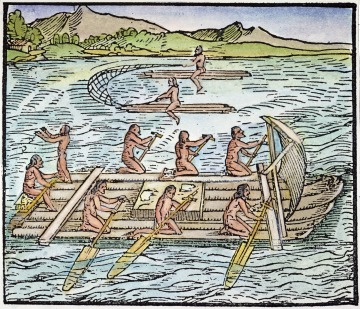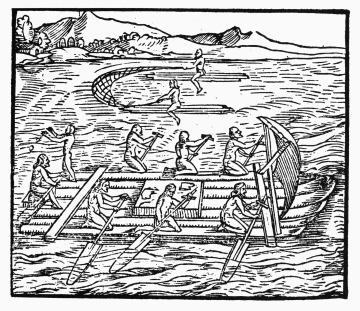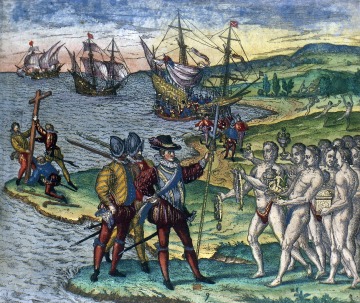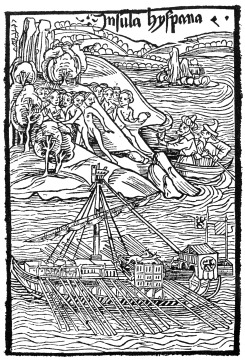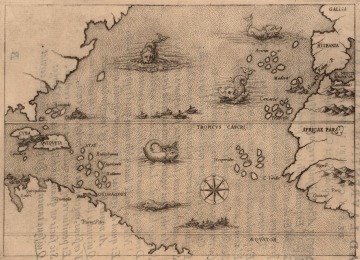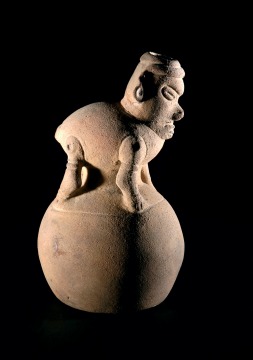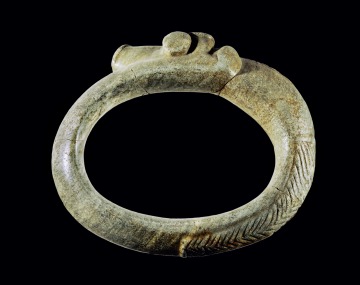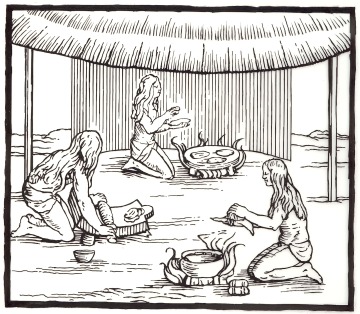AD 1492: Taíno meet Columbus; “New World” gets new diseases
In the Bahamas, the Taíno are 125,000 strong in 1492 when they encounter the crew and the Italian captain of three Spanish ships. Christopher Columbus seeks a shorter sea route to India to help Spain get a foothold in the profitable spice trade. Instead, he lands in what Europeans will call the “New World.” His arrival sets off a fierce rivalry among European powers for colonies and riches, which lasts for centuries and unleashes deadly epidemics on the 30 million Native peoples living in the Americas, who lack any immunity to “Old World” diseases.
- Theme
- Epidemics
- Region
- Southeast
European artist’s depiction of Taíno fishermen. Woodcut from Girolamo Benzoni’s Historia del Mondo Nuovo, Venice, 1563.
Courtesy Granger Collection, New York
European artist’s depiction of Taíno fishermen. Woodcut from Girolamo Benzoni's Historia del Mondo Nuovo, Venice, 1563.
Courtesy Granger Collection, New York
Depiction of Taíno encountering Christopher Columbus, engraving, ca. 1594, by Theodor de Bry. Some of de Bry’s illustrations may have been based on first-hand observations by European explorers, but de Bry himself never visited the Americas, and the accuracy of many of the illustrations is questionable.
Courtesy Granger Collection, New York
European artist’s depiction of Christopher Columbus trading with the Taíno on his first voyage to the “New World," from the illustrated edition of Columbus' 1493 letter to Gabriel Sanchez, treasurer general of the kingdom of Aragon.
Courtesy Granger Collection, New York
Map illustrating the voyages of Christopher Columbus, by Lorenzo Gambara, 1500s
Courtesy John Carter Brown Library at Brown University
Taíno vase with figure, AD 14th–16th century, Dominican Republic.
Courtesy Réunion des Musées Nationaux / Art Resource, NY
Large cult object of the Taíno, AD 13th–15th century. The significance of this stone necklace is still unknown.
Courtesy Erich Lessing/Art Resource, NY
European depiction of Lucayan Taínos, who inhabited what is now known as the Bahamas and Turks and Caicos Islands when Columbus arrived in 1492. Such representations were typically not accurate recordings of native peoples and their cultures.
Courtesy Ships of Discovery, Illustration by Orlando J. Castro
